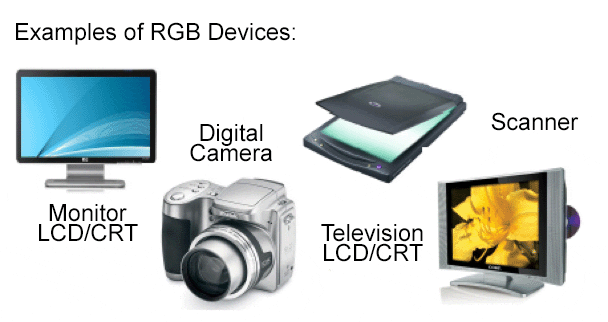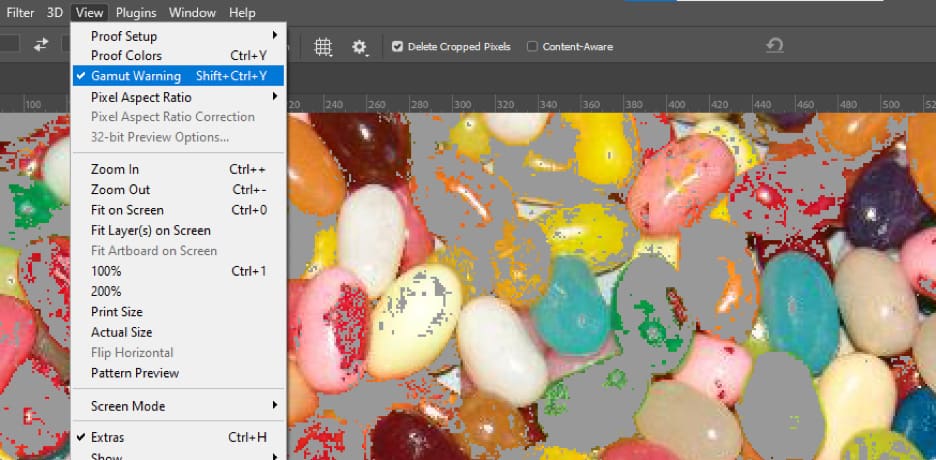Colour Space: Monitor Colour Display (RGB) versus Digital Printing (CMYK)
One of the most common questions when utilizing professional printing services is why don’t the colors that are seen on a monitor match what is printed? If you design something on a computer and send it to print, it’s important to know this difference to avoid potential frustration, especially when utilizing digital printing services. If you have ever designed a document containing fluorescent green or bright orange, and it has come back muddy colours from the printer, the RGB to CMYK conversion may be to blame.
Once you understand the RGB to CMYK conversion, you can hopefully avoid common pitfalls when designing your documents for printing. Understanding some basic colour concepts as it relates to on-screen viewing and printing, will help ensure that your final print looks more like you envisioned it. We have kept this blog very simple to touch on Colour Gamut and CMYK versus RGB related to printing. We have purposefully left out many complex concepts such as LAB, ICC Profiles, Rendering Intent, and other workflow factors, which are still very important but have not been touched on in this article.
A good place to start is by understanding Colour Gamut, and the difference between RGB and CMYK.
Colour Gamut
Colour Gamut is the extent or range of colour possibly achievable or perceivable, which is specific to an individual device. Each RGB or CMYK device has a different colour gamut, or range of colours possibly achievable. Our human eyes have the widest colour gamut, also knows as the Visible Spectrum. RGB Devices have the next widest colour gamut, followed by CMYK devices that have a smaller colour gamut.

What is RGB Colour in a Monitor Display?

RGB refers to red, green, and blue light sources, which can be combined to form millions of colors on a screen or monitor. RGB devices contain a light source, such as your monitor. RGB is an additive color model in which colors are created by light and is used in any device with a screen, like your computer monitor or laptop, cell phone, tablet, digital camera, etc. 100% of each R+G+B=White.
Even across different screens, RGB colour can vary significantly. Many factors can contribute to this, such as the age of the device, screen resolution, and color calibration on the monitor. This is why it’s important to have your monitor calibrated on a regular basis. TR Trades recommends calibrating your monitor monthly, or more often if you are consistently working on colour critical pieces.

What is CMYK Colour in Digital Printing?

CMYK stands for cyan, magenta, yellow and black; these are the four colors of ink that most printers use to display images on paper. CMYK devices contain no light source. CMYK is a subtractive color model that uses colors reflected or absorbed by pigmented inks to create color and is applied one at a time, with four different plates or filters. This process is known as four-colour (4C) separation because each ink is applied one at a time, with four different plates or filters.
Some high-end digital equipment, such as the kind used here at TR Trades, incorporate additional colour inks to increase the range of available colours, such as Red, Fluorescent Green, and Orange.

Conversion from RGB to CMYK:
The RGB to CMYK conversion process is complex and varies from one digital printer to another, so RGB images often need editing before they go print.
When RGB is printed using CMYK inks, some detail is lost because RGB colors contain more detail than CMYK colors, which ultimately can decrease their quality. RGB may also have trouble reproducing some secondary colors like orange or green due to the CMYK color gamut being smaller. If you have chosen a colour in RGB on your monitor, it may not print properly when converted to CMYK. The printer’s RIP or other workflow will crop the colour value to the closest colour possible. And this cropping is dependent on the quality of the printer and its RIP, among other factors.
In comparison, CMYK has a limited color range, is less saturated or bright than RGB colors, but also has better color stability and more accuracy when reproducing colors across multiple devices.
There are some exceptions though. RGB is very commonly used for creating and editing digital photos and on-screen graphics, as well as for the digital production of artwork.
Ultimately, for best results when printing, it’s important to understand that these colours will never be identical because the image that is viewed on-screen and the printed image use two different color sources. Knowing this helps to know how the colours you’re using will look when they are printed. To achieve the best results, choose colours from a CMYK palette or a Pantone swatch book.
Pantone Swatch Book
Pantone Swatch books show you all the colours that are reproduceable in CMYK from most digital printing devices. If you build your files using Pantone book colours, you will receive more accurate colour results than if you are choosing colours using digital sliders in your design programs.

Soft Proofing
Many Adobe Programs will have a soft proofing function to assist in predicting the outcome of the RGB to CMYK Process. For instance, in Photoshop, under ‘View’ you will see ‘Gamut Warning’. When ‘Gamut Warning’ is chosen, you can see from the image below, that Photoshop has grayed out all the colours that are beyond the CMYK printable spectrum.

Hard Proofing
Here at TR Trades, if you are working on a colour critical piece we always recommend requesting a hard copy proof before going to print. This will give you the opportunity to proof any colour shifts before going to final production.
Have More Questions?
Do you have a colour critical piece or need proofing before printing? Call one of our graphics team members and we would be happy to assist.
Contact us today at 604-736-4571 or by email at digital@trtrades.com for any questions or to request a quote.
By Carla Duncan



